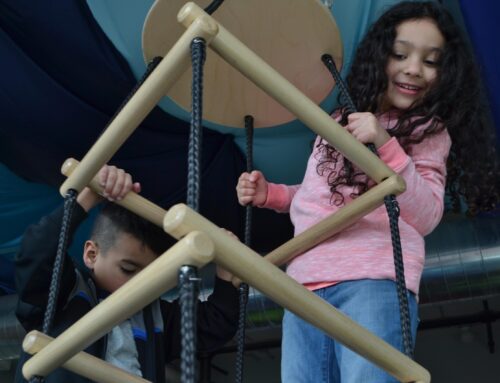When a child is developing, there are many checklists going on in their parents’ heads about what milestones they are meeting. Are they rolling on time? Walking? Saying the right amount of sounds of words? Crawling is a very important milestone in a child’s development. While it is an important gross motor milestone, there are many aspects of crawling that help development in other areas.
There are of course many physical benefits to crawling. When crawling, children will develop strength in their entire body. Crawling requires large muscle groups to drive movements, resulting in strengthening in all these large muscle groups that will help them walk, run, and jump in the future. Their core and trunk strength will also develop, as crawling requires a strong core base to move the arms and legs and maintain their balance. They will develop their shoulder strength through weight-bearing on the hands. As their hands are moving across surfaces, their intrinsic hand muscles and arches will develop, which will aid them in various grasping tasks such as holding a pencil or opening a jar.
In addition to these strengths and hand development aspects of crawling, there is a visual component that develops when the child is crawling. As the child is moving throughout their environment, he or she is developing their ‘optic flow’ as the environment is moving past him when he is crawling past. This skill is particularly useful when walking or driving later in life. The child will also develop other visual skills such as spatial awareness, depth perception, and convergence. Your child will start to calibrate the meaning of these things – the more time it takes to crawl to an object, the farther away it is and vice versa. He or she will start to develop the ability to have his or her eyes work together when an object is getting closer, allowing them to appropriately track the object. These skills are important with safety and body awareness, throwing and catching a ball, and reaching for objects.

A child’s vestibular and proprioceptive system is also developing when a child is crawling. Your vestibular and proprioceptive system are 2 key players in balance, and the ability to understand where his or her body is in space. As the child’s head position changes and the child is activating the muscles around the joints, these systems are making new connections and the brain is learning how to interpret those signals. The ability for the child to recognize where their head, arms, or legs are positioned in space will allow them to develop the walking, running, and jumping skills, as well as translate to the ability to maintain a safe body while completing these tasks.
Finally, your child is learning how to use the right side and the left side of his or her brain together. Having the brain work in full communication with each other allows for complete coordination when completing activities and tasks.
Crawling gives your child increased independence. They have the ability to make their own decisions, move to a toy or object they want to further explore, and as a result experience the gratification of completing a goal and reaching that toy that they really wanted to play with! Their self-confidence increases, and with each success – and failure – they discover both their potential and limitations.
While some children skip this stage and develop these skills appropriately, there are others who may not have had the ability to develop these skills that come with crawling. These children will present with difficulty understanding where their body is in space (frequent falling, uncoordinated movements), participating in throwing or catching activities, grasping a marker, or visual difficulties. While the lack of crawling may not be the only answer as to why your child may be experiencing these difficulties, it can be an important piece in helping determine what activities, exercises, or therapeutic interventions your child may need to help them develop these skills.

Blue Bird Day fosters socialization, sensory regulation, and pre-academic learning in children ages 2-7 years in therapeutic rotations that simulate preschool and kindergarten settings. Our compassionate therapists practice a relationship-based and family-centered approach, provide parent training, and collaborate on goals and individualized intensive treatment plans for your child.
We believe in a collaborative and multi-disciplinary team approach to therapy. A team of occupational therapists, speech-language pathologists, dietitians, developmental therapists, behavioral therapists, physical therapists, and therapeutic assistants are created for each child to ensure child and family are fully supported and the best possible results are achieved.
Options for individualized, group and virtual therapy sessions are available as well.
Want to learn more or you have a specific question? Feel free to connect with us here!



